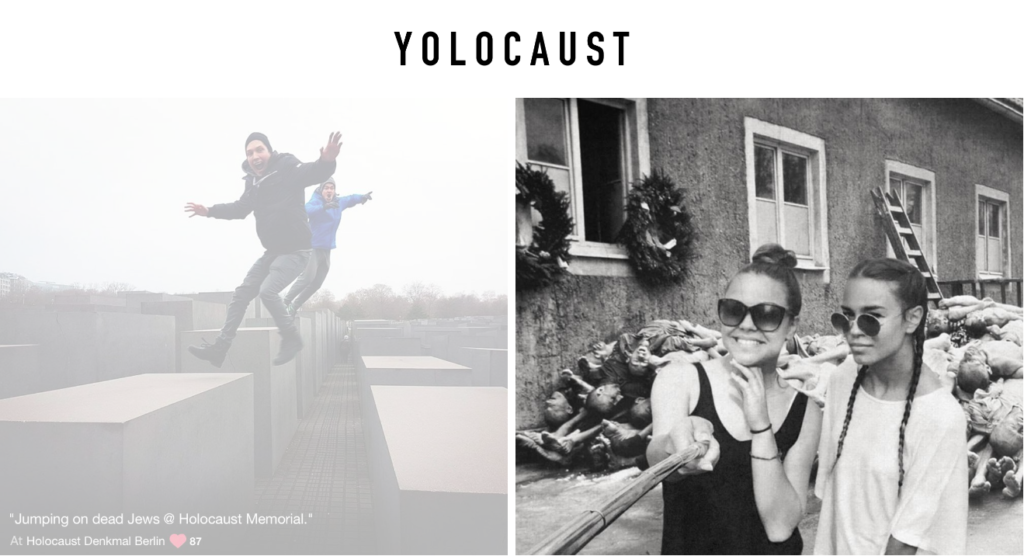Art World
Viral Website Combines Holocaust Memorial Selfies With Gruesome Archival Photos
An Israeli artist criticizes disrespectful visitors to Berlin's Holocaust memorial with 'Yolocaust.'
An Israeli artist criticizes disrespectful visitors to Berlin's Holocaust memorial with 'Yolocaust.'
Alyssa Buffenstein

This week in viral internet controversies: Yolocaust, a project by Israeli artist Shahak Shapira, juxtaposes tourist photos taken at Berlin’s Memorial to the Murdered Jews of Europe and shared on social media with archival photos of mass graves in concentration camps.
Yolocaust is a cringe-inducing name for a shocking project, a photographic reminder of the horrors of the Holocaust made all the more nauseating by the carefree poses of selfie-takers, who, in the best case, seem to have missed the point of the memorial entirely; and in the worst case, have chosen to disrespect the memory it tries to preserve.
The most shocking post is the one that is, at the time of writing, featured at the top of the site. It captures two young men in midair, as they each jump from one concrete slab—one of 2,711 stelae that comprise the monument—to another.
“Jumping on dead Jews @ Holocaust Memorial,” the original caption reads. It received 87 likes on social media. When you hover your cursor over the image, the background disappears and is replaced with a gruesome image of a pile of skeletal corpses.

Screenshot from ‘Yolocaust.’
Designed by American architect Peter Eisenman, the memorial has been controversial even before its unveiling in 2005. Critics have argued that its vague, abstract nature makes it an ineffective memorial, or that it erases the memory of non-Jewish Holocaust victims.
And some Germans of a certain political persuasion, like politician Björn Höcke of the right-wing Alternative für Deutschland party, think Germany should give up already on atoning for its World War II sins. Just last week, Höcke called the memorial a “monument of shame” that makes Germans feel like “a totally defeated people.”
Nonetheless, the monument has taken on a life of its own, whether its garnering a few likes on Instagram, helping men to find hook ups, or becoming a site to catch Pokemon. Eisenman, on his part, probably doesn’t have a problem with any of it. He told Spiegel Online in 2005:
“People are going to picnic in the field. Children will play tag in the field. There will be fashion models modeling there and films will be shot there. I can easily imagine some spy shoot ’em ups ending in the field. What can I say? It’s not a sacred place.“